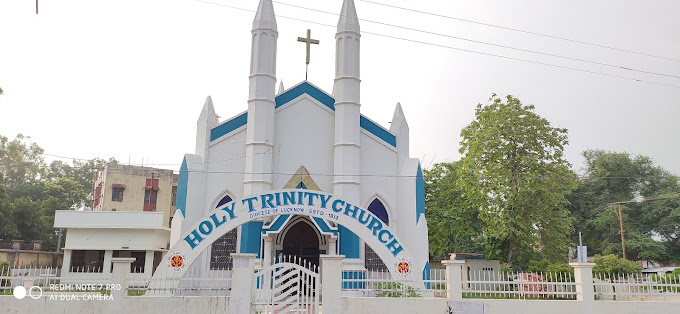
Holy Trinity Church Azamgarh (UP)
Trinity Church Azamgarh opened for the service of Lord Almighty by the Rt. Rev. Lord bishop of Calcutta in the month of December 1813. That time the church was under Methodist church of Australia. In 1971 Trinity church recognized by CNI and then in 1982 the name of Trinity Church was changed to Holy Trinity Azamgarh.
Address: Holy Trinity Church, Azamgarh(up)
Civil line, p.o. sadar Azamgarh – 276001

St. Paul’s Church, European Colony, Mughal Sarai (1910)
St. Paul's Church, Mughal Sarai was established in February 1910 during the British period, this church was built for the railway employees. In 1970 came under CNI North worship services are held every Sunday by the help of church elders and presbyter. The current presbyter is Rev. Iqbal Masih.

St. Mary’s Church, Cantonment (1810)
This beautiful and oldest church of Varanasi is located on the confluence
of The Mall Road and Stranger Road in Cantonment Region. Charles Simon, the
Saint and Scholar of Cambridge persuaded five men to come to India as the
first Chaplains of the East India Company. They were: Henry Martin, who was
Senior Wrangler, David Brown, Claudius Buchanan, T.T. Thomason, and Daniel
Corrie. Daniel Corrie was first appointed to Chunar where he arrived in
1807. He visited Varanasi on 6th July 1807 and met a merchant named George
Wheatley, who was a godly man and visitor of the sick, was reading prayers
and preaching in his own home on Sundays and some were joining him. The
General was far from sympathetic but the local residents collected
voluntary subscriptions to build St. Mary’s Church.
The foundation stone was laid on 29th April 1810 by Daniel Corrie. The
Church was completed in 1812 but was not consecrated until 1824 by Bishop
Heber, who had been consecrated Bishop of Calcutta in 1813. The tower,
steeple, bells and clock and portico are later additions and the Church was
enlarged after 1857 by taking in the rooms at the west end of the Church
and moving the Holy Table to the East. This gave the interior the somewhat
peculiar appearance that it has today.
St. Mary’s is probably the oldest Protestant Church in North India
outside Calcutta.
This church was built in pure European fashion. The exterior the church
give an impression of Greco-Roman kind of architecture. The walls are
decorated by niches in the shape of vaults and are perforated by
clerestories and doorways, which allowed light and air inside the church.
The doors and niches are arranged in alternate fashion and framed by
pilasters. The church is preceded by a portico which is supported by
pillars and is decorated in Doric order by a frieze with alternating
triglyphs and metopes, a cornice and a pediment. The flat roof is held by
iron crossbeams. The entrance is surmounted by a belfry modeled on towers
commonly seen in the churches of Romanesque period; this tower here houses
the clocks and the bell. Upon entering the church we find that it had once
a flat roof, but now it has caved in. The most dominating feature of the
church is the triumphal arch that spans almost the entire width of the
church. Beyond the arch was located the choir, then followed by the apse
and the altar, but is screened by another arch. The decoration of Gothic
tracery can be seen on the huge arch. It also has a baptistery with marble
flooring. Another important feature is the stained glass windows
illuminating Biblical scenes that adorn the altar. The columns that hold
the lintel of the ceiling are Doric in type. This church was planned as a
hall type church and did not have defined Aisles.
The Soldiers of the British Regiments posted in Varanasi worshipped in this
Church under the Church of England with King or Queen as the Head. Sunday
worship morning Matins and evening Evensong were held by a Chaplain (Cap /
Major) of the Regiment and English speaking mostly Anglo Indians and
Britishers posted in different administrative posts then worship
In 1947 when India got Independence this Church was handed over to the
Lucknow Diocese.
Trust Association of which the Bishop of Lucknow is the head posted in
Allahabad and now it is CNI(Church of North India). This
beautiful Church is situated in 11.25 acres of land and has historic
background which will be seen from the monuments in the campus of British
soldiers who died in action. Inside the Church there are slab stones of
English people who died and are remembered today as we read their history
from the slab stones.
This ancient building is now slowly coming apart and the local worshippers
are very few (5-15 people) who help with their contribution to keep the
worship on Sunday alive.
Most of the roof has caved in and overall renovation is badly needed to
save this beautiful old building.
On 26th Feb 1961 Queen Elizabeth II along with her husband
Prince Phillip worshipped in this Church. They enjoyed and
admired the Church in the quiet lush green field of the 11.25 acres of land
with over 100 mango trees the fruit of which is sold yearly and the small
amount from this helps towards the upkeep and maintenance of the Church.
The wall around this big campus is repaired year after years by a
well-wisher family and regular worshipers and now the cantonment board has
built a wall around to save the Church from undesirable encroachers.
Present presbyter in charge is Rev. Sanjay Dan
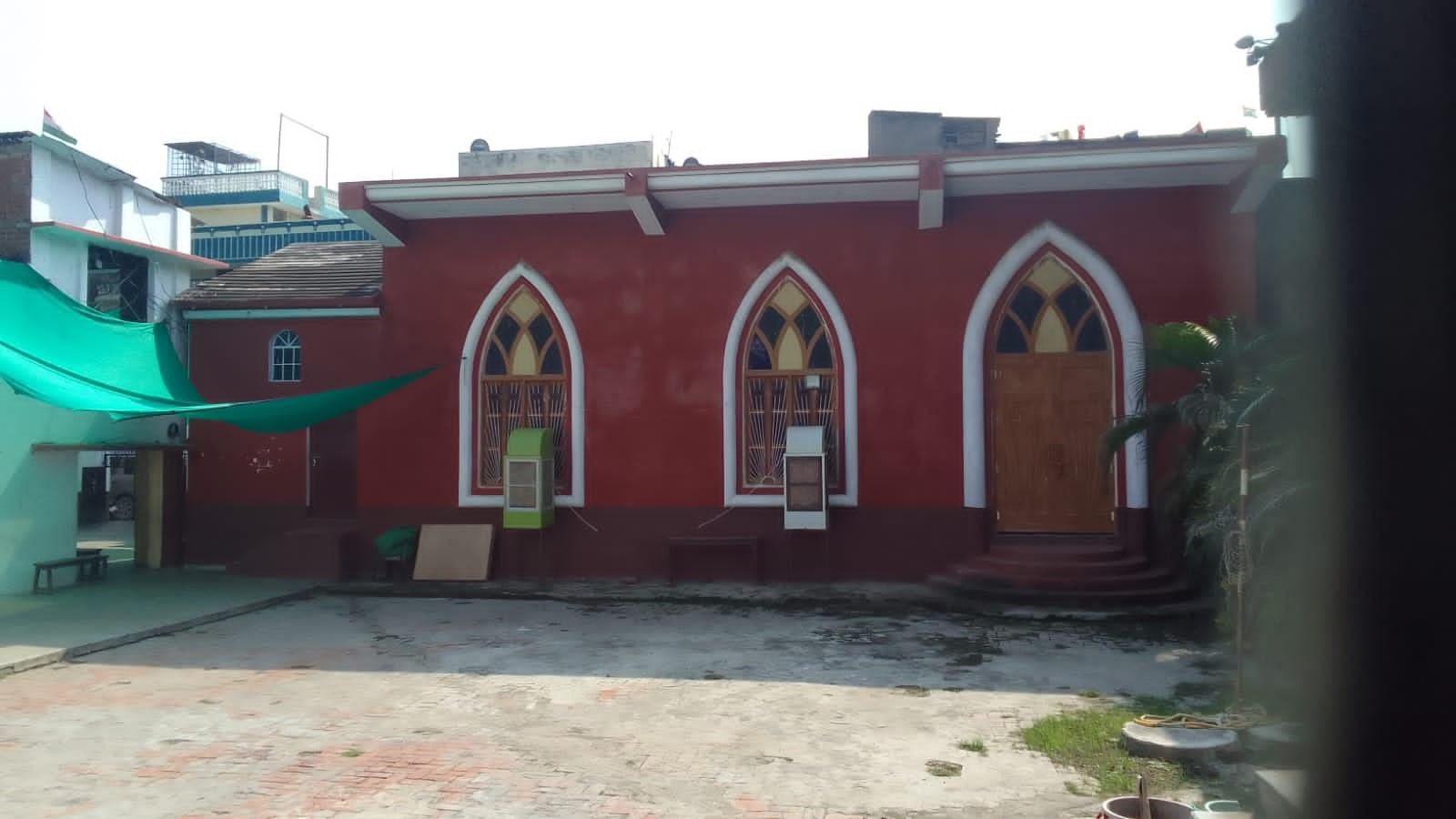
St. Stephen’s Church, Mission building, Qasab Mahal, Mughal sarai
Stephen's Church Mughal Sarai was established in 1940 by the British. The earlier name of this church was Kasab Mahal and this church was a Methodist church but after 1970 this church came under CNI. During the time of late Bishop A.R. Stephen, this church was named after him. St. Stephen's C.N.I Church, which is known by the same name till date. Presently, the presbyter in-charge of this church is Rev. Iqbal Masih.
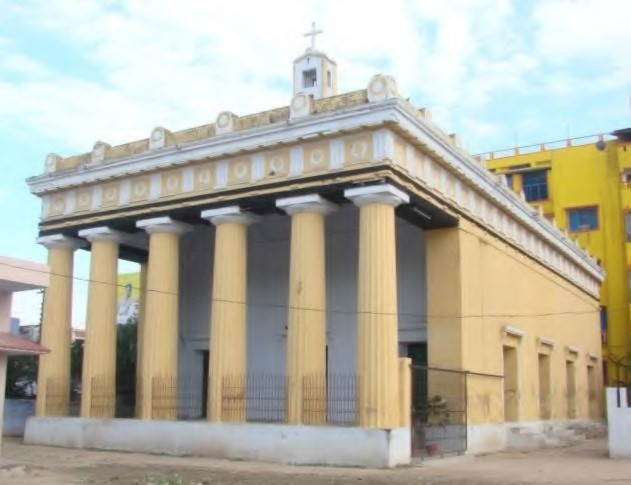
This is a huge church located behind the Uttar Pradesh Roadways Bus stand (Fig. 4). It is a protestant church founded on 25th July 1856, for the poorer section of the people. It was built on an agricultural land purchased by Reverend John Mullet from local Jamindar (landlord) Batuk Dayal Singh. John Mullet acted as the priest here from1882-1883. The current building was constructed here during the period of 1934-35, when John Adam Surman was the priest here. However, the church came under guidance of The London Missionaries Society, and during 1933 under Methodist Trust. On 29th November 1970 it came under CNI (Church of North India). The basic purpose of the church was to serve the poor Christians, who were not allowed inside the churches meant for the European people during the colonial period. The height of the church is 40 ft and the nave rises 60 ft. On the top of the church is a 13ft high holy cross in bronze and a bronze bell weighing 40 Kilogram. This church used to run a training centre for girls, school and a hospital. Mainly the current church is built on a cemetery. The residential area around the church has a population of 60-70 Christian families. The most prominent element of western architecture seen in this church is the huge portico preceding the church. This portico has a resemblance with the Parthenon of Athens. Like the Parthenon, the portico is supported by Doric columns and has an entablature with Frieze decorated by alternating triglyphs and metopes. The roof of the portico is flat and held by iron crossbeams. The church is an extended hall with a huge altar and no arch has been used to separate the altar from the main body of the church. The church does not have a clerestory, but is lit by light pouring from series of doors flanking both sides of the church. The roof used to be gabled type made of tiles. The present presbyter in charge is Rev. Shashi Prakash.
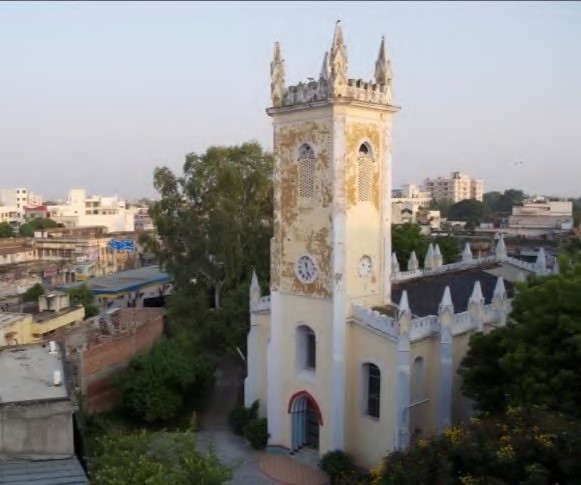
This church named after Apostle John is one of the most beautiful Church of
Varanasi and is located on the Anne Besant Road, Sigra (Fig. 3). It was
built in 1841 and height of 150 ft, while the length is 120 ft and breadth
is 80 ft. The Church is in shape of a cross, which can be seen from the
inside of the church also. There are three huge clocks made by British
watch makers is one of the prized possessions of the church. A bronze bell
weighing 150 Kilogram was also imported from Britain. The roofing was of
the asbestos and lined with Allahabadi tiles. Two years back complete roof
was changed with corrugated steel sheets.
Saint Paul’s located at Sigra, shows the most matured use of western
elements. This church is in the shape of a cross. Its exterior portions
show the prominent Gothic architectural features. The upper corners of the
roof are decorated by spires. The façade consists of an entrance, which has
been fashioned on Gothic portals. A huge clock and bell tower surmounts the
entrance. Though its not functional. It is in square shape and ends with the
same kind of finials on the four corners that decorate the corners of the
roof. Large windows fashioned in pointed arches adorn the entire span of
the wall and are used for lighting and ventilation. In the interior there
is a large hall with a gabled roof, followed by two transepts with a choir.
The altar is separated from the rest of the church by a huge triumphal arch
of pointed shape. The altar has a window which is decorated by stained
glass and tracery which is quite common to Gothic churches.
Present presbyter in charge is Rev. Sam Joshua Singh.
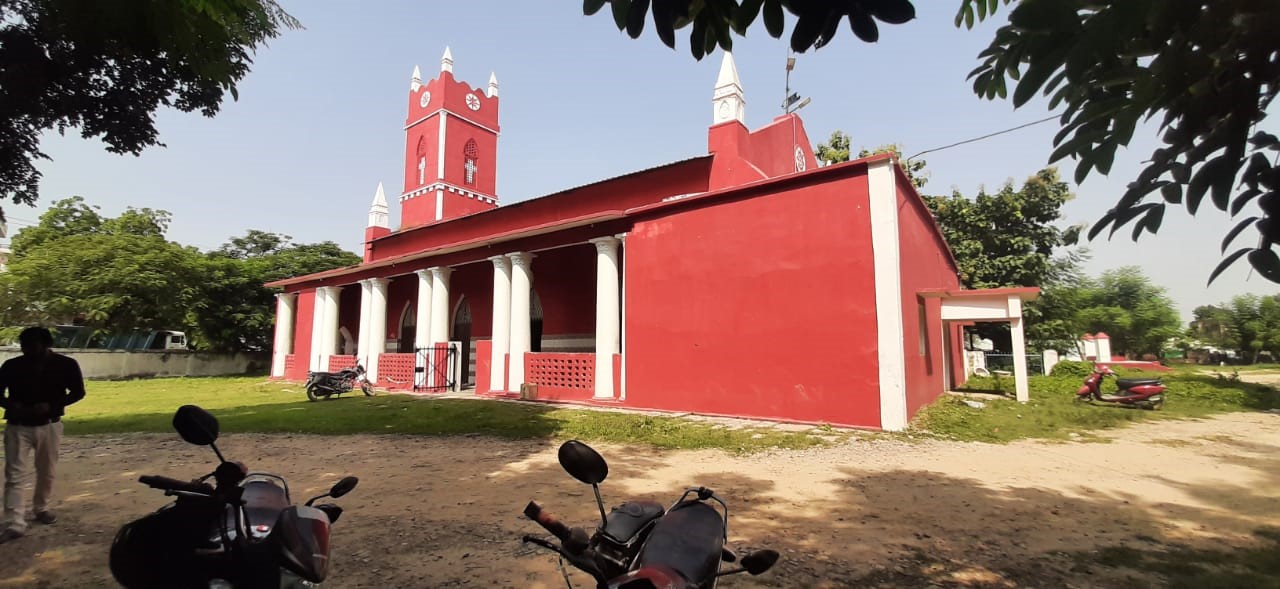
St. Thomas Church Gazipur – 1862 (CNI)
St. Thomas Church, Tulsi Sagar, Gazipur was established in 1862. The Church
was founded by a renowned missionary, late
Rev. W. Ziemann.
Rev. Ziemann served as the first presbyter of the church. His entire work
on Gazipur can be found in H Lorbeer publications book,
‘Memoirs of Rev. W. Ziemann; founder and Missionary of the Gazipur Mission.
The book is currently unavailable, but I could find the book overview which
gives some glimpse on the Rev. Ziemann’s burden on Indian mission.
Book overview:
The passage in Mr. Ziemann's diary, to which I shall be most happy to refer
now, runs thus:--"Having sold our house and property, and after a very
blessed farewell from all friends and relatives, we left Zabakuk on
Thursday, the 25th August (1842), and arrived quite well at Berlin on
Friday, the 26th August, with our bed and trunk, and were very kindly
received by Pastor Gossner, who gave us also lodging. After being through
him greatly edified in the word of God, and being blessed by the Lord, we
were on Monday, the 5th September, 4 o'clock p. m., ordained by Pastor
Gossner in the Bethlehem's church before the Holy altar of the Lord in the
presence of a large congregation; together with us there were also ordained
two brethren, Gottlieb Noeser and Jul. Voss, and two sisters, Amalia Hennig
and Amalia Brauer. Our dear Lord and Saviour gave us great blessings and we
felt the presence and breathings of His good Holy Spirit, and His peace in
our hearts. Pastor Gossner preached a sermon on Matthew x--16, and enjoined
upon us most urgently the poor heathen, that we should preach to them the
true and pure Gospel of Christ, and show them with prayer and love to the
Wounds of our Saviour, and that we should remain steadfast in faith, and
preach nothing but Jesus Christ crucified for the salvation of the whole
world, and that all men should get through His blood everlasting life. We
have to all, what the servant of Christ said, given our consent in saying
"yes" and have promised in the presence of God and the congregation to
remain faithful. May now the Lord Jesus Christ help us and bless us and be
with us in all our doings. He may carry us to the poor Heathen and give us
souls, whom we can gather as the fruit of His suffering.
Rev. Abhay Sones was the last presbyter in charge posted in the church.
After him the Church is run by the pastorate committee through the help of
a local preacher, but sacraments of the church are performed by Reverends
of CNI. The committee arranges according to the need.
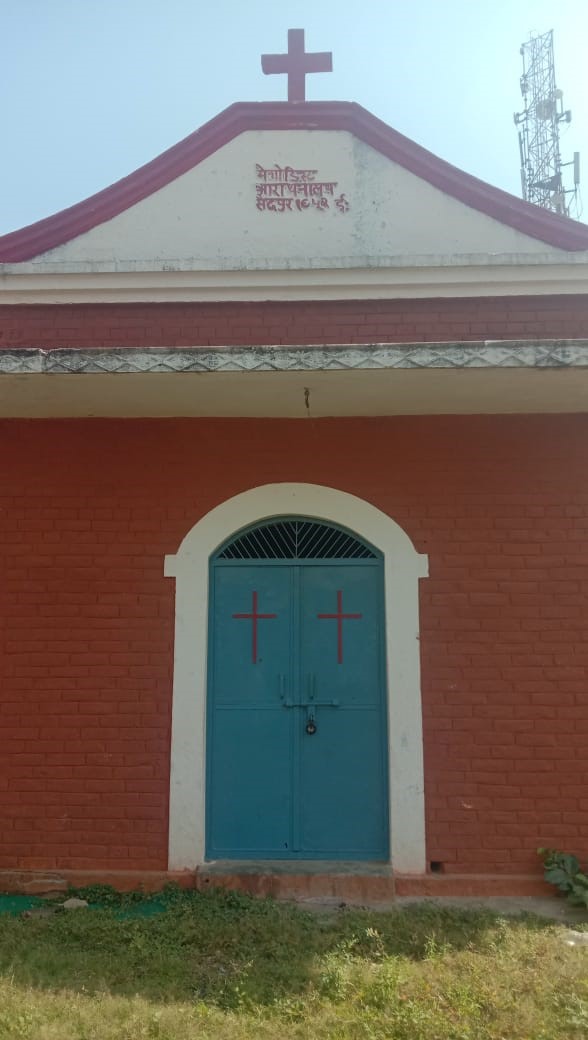
CNI Church Saidpur – 1952
CNI Church Saidpur earlier known as ‘Methodist Aradhanalay’ was established by pastor Khama Sava Saheb in 1952. For many years the church was in ruins. In the regime of late Bishop A R Stephen the charge was given to Rev. Ajit Lawrence, he renovated the building and hold services in the church. At present Rev. Susheel Dean is the presbyter of the Church.
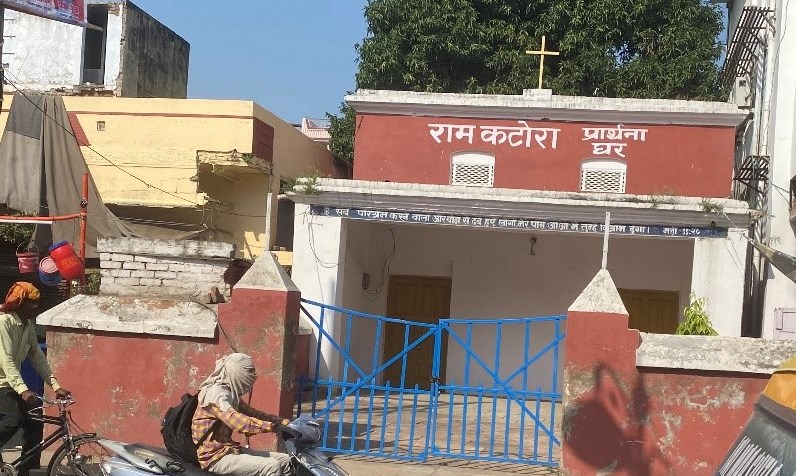
Ramkatora Church, Lahurabir, Varanasi (1958)
This church is located on the road from Lahurabir to Ramkatora. The church was founded on 1st February 1858. Previously it was reading room used by both the European and native converts which was later converted into a church. The church was designed by British architects and was registered under Bible and Missionaries Fellowship Act in 1861. This church is affiliated to protestant sect of Christianity. The building is 30 ft high. A cross has been attached on the top of the church. This church was located near the residence of British officers. As mentioned earlier, the Church was a reading room, later it was affiliated to Teliyabagh church in Varanasi. The contemporaneous pastors hold services in the church. Now for many years, for unknown reasons the Lucknow Diocese (CNI) doesn’t have the name of this church in its record (citation needed) The Church is run by a devout Christian family.
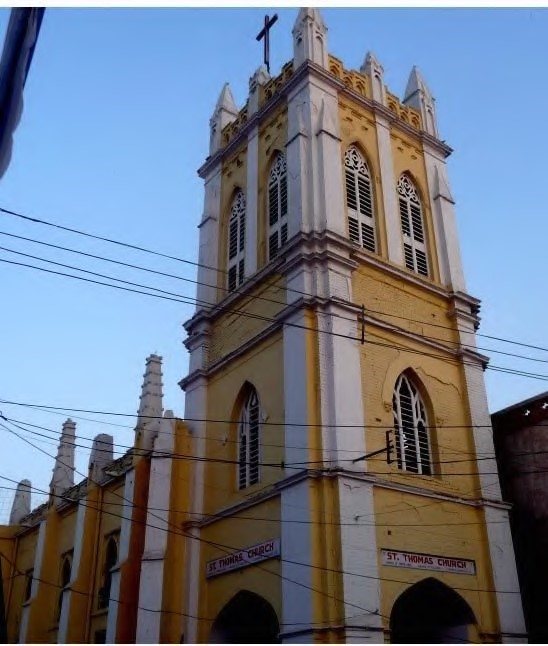
St. Thomas Church, Godowlia Varanasi (1870)
This church is located on the heart of Varanasi, at
Godowlia. Almost 140ft high church was built in 1870 and named after
Apostle Thomas who came to India in 52 CE. Traditionally it is believed
that St. Thomas came to this place and prayed after which he went to Madras
and died there.
In late 50s- 70s there was regular church services held in the church by
foreign missionaries and Indian catechist and Reverends. For unknown
reasons the church was turned into a reading room for the seekers. In 1990s
under the able leadership and effort of our present bishop sir, Rt. Rev.
Morris E. Dan (then presbyter of Teliyabagh Church varanasi ) and a very
zealous person Mr. Ashok Dan, rubbed shoulders together and after much
conversation with parties and taking bold steps turned the building again
into a church. In 1996 Rev. Morris E. Dan (Now Bishop of Lucknow Diocese)
transferred to Allahabad. Ever since Rev. Newton Stevens is pastoring the
Church.
The picture of all the pastors of Varanasi and their contact numbers will
be sent in a separate file.